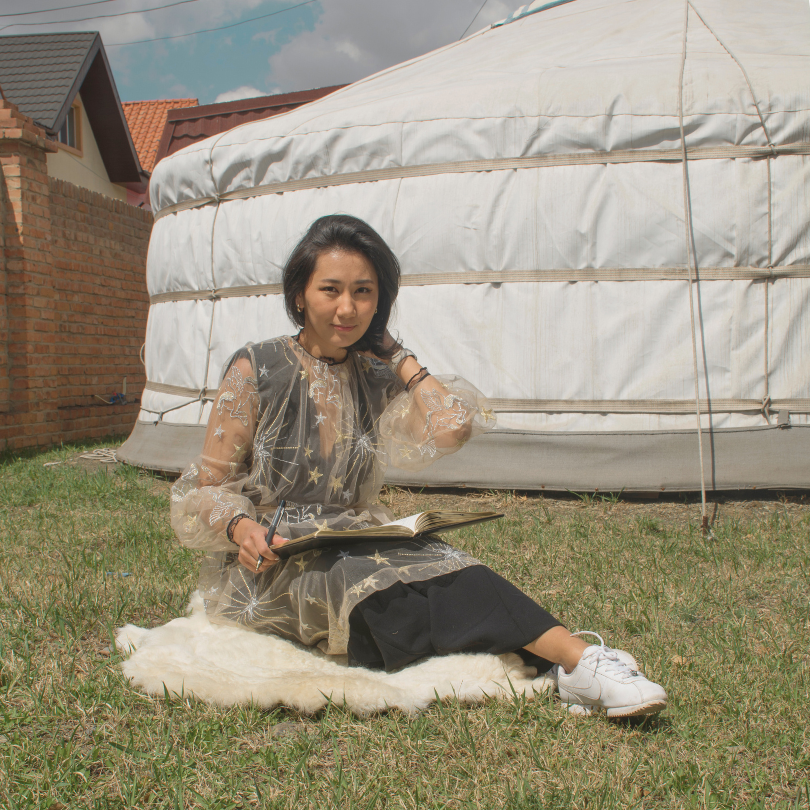Welcome to our holistic approach to baby sleep, where science meets culture to provide comprehensive solutions for families around the globe.
The Cultural Significance of Sleep: A Personal Reflection
Sleep is universal. Every culture, every people, every tradition has its way of thinking about sleep. And yet, in my years of studying and consulting on children’s sleep, I’ve come to realize how deeply cultural beliefs shape our perceptions, habits, and even anxieties around it.
Growing up in Mongolia, sleep was never just a biological function—it was an act steeped in tradition and protection. When I was eight years old, my cousin was born. As a little girl, I had always dreamed of having a younger sister, so her arrival felt incredibly precious to me. I eagerly took it upon myself to help care for her in any way I could. I remember my uncle—her father—cutting the shape of a fox from a piece of felt and hanging it near her crib. He told me it would protect the baby from mischievous spirits that might try to disturb her sleep by playing tricks on her.
This tradition is deeply ingrained in Mongolian culture and is still practiced today. At the time, as a child, I accepted it as absolute truth. But as I later delved into sleep science, I found myself revisiting that tradition with a new sense of curiosity.
Newborns spend nearly half their sleep cycles in REM sleep, also known as active sleep. This means they often appear awake when they are actually sleeping. A baby might half-open their eyes, smile, or coo, only to suddenly cry or whimper—all while still asleep. In Mongolian folklore, this phenomenon is explained quite differently: it is said that a fox enters the baby’s dreams, whispering lies and tricks to keep the baby restless, preventing them from sleeping peacefully.
Of course, hanging a felt fox does not make REM sleep disappear. But that’s not really the point. The fox is a symbol of protection, a tradition passed down for centuries that holds deep emotional and cultural meaning. No matter what science tells us, this practice remains significant to Mongolian families. Simply placing a fox above a newborn’s crib is an instinctual act—so deeply rooted in our culture that no scientific explanation, no matter how well-reasoned, could erase its importance.
This is just one example of how traditions, cultures, and deeply held beliefs shape our understanding of the world—even in areas where science offers a clear, black-and-white explanation. Culture and science do not always need to be in opposition; sometimes, they exist side by side, shaping the way we experience life in ways that cannot be fully measured or rationalized, only felt and understood.


Even beyond Mongolia, I see how sleep is woven into identity. In Japan, the concept of “inemuri”—napping in public—is a badge of hard work rather than laziness. In Scandinavian countries, babies nap outside in freezing temperatures, reinforcing a belief in resilience and health. And in America, where the “hustle culture” glorifies sleep deprivation, parents often struggle with guilt when prioritizing their child’s rest over productivity.
But here’s what I’ve learned: No matter the culture, the universal need for sleep remains the same. The way we interpret it may differ, but the fundamental truth is that quality sleep is essential for health, development, and emotional well-being. As a Mongolian sleep consultant expanding to an international audience, I often bridge these cultural gaps, helping families embrace healthy sleep practices without feeling like they must abandon their traditions.
So, as I build Sleep Corner and bring Mongolian sleep wisdom to a global stage, I hold onto the felt fox from my childhood—not just as folklore but as a reminder that culture and science can coexist. That security, whether from a charm, a bedtime routine, or a mother’s embrace, is ultimately what makes sleep peaceful.
What sleep traditions did you grow up with? Do you still follow them, or have you blended them with new practices? Let’s start a conversation—because sleep, after all, is something we all share.
